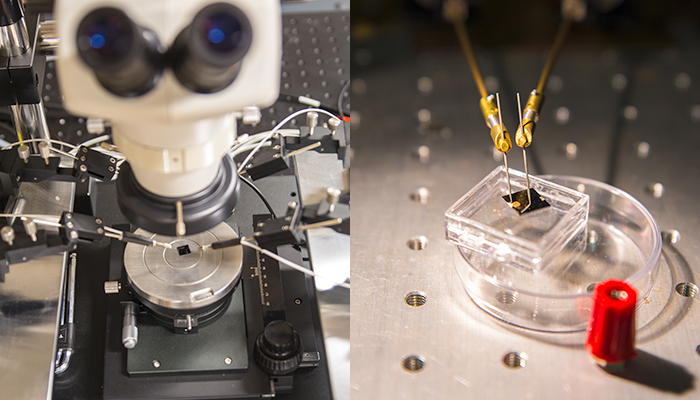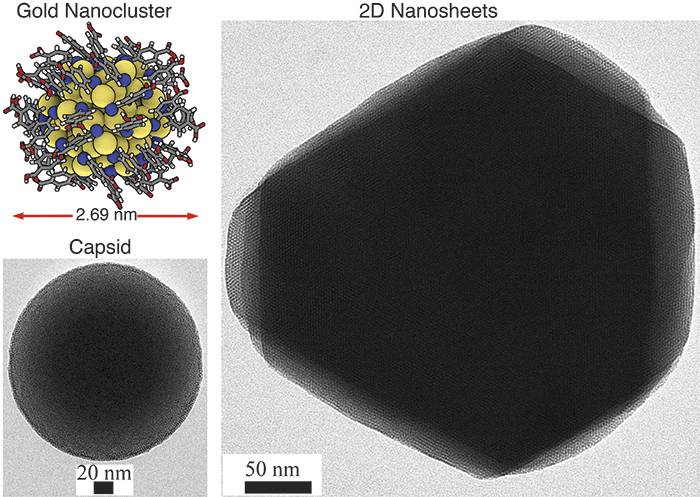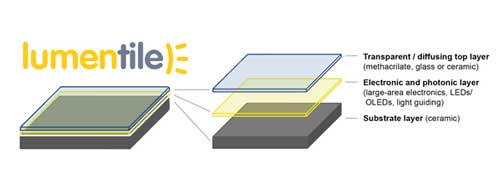It seems counter-intuitive but societies where women have achieved greater equality see less participation by women in STEM (science, technology, engineering and mathematics) than countries where women are treated differently. This rather stunning research was released on February 14, 2018 (yes, Valentine’s Day).
Women, equality, STEM
Both universities involved in this research have made news/press releases available. First, there’s the February 14, 2018 Leeds Beckett University (UK) press release,
Countries with greater gender equality see a smaller proportion of women taking degrees in science, technology, engineering and mathematics (STEM), a new study by Leeds Beckett has found.
Dubbed the ‘gender equality paradox’, the research found that countries such as Albania and Algeria have a greater percentage of women amongst their STEM graduates than countries lauded for their high levels of gender equality, such as Finland, Norway or Sweden.
The researchers, from Leeds Beckett’s School of Social Sciences and the University of Missouri, believe this might be because countries with less gender equality often have little welfare support, making the choice of a relatively highly-paid STEM career more attractive.
The study, published in Psychological Science, also looked at what might motivate girls and boys to choose to study STEM subjects, including overall ability, interest or enjoyment in the subject and whether science subjects were a personal academic strength.
Using data on 475,000 adolescents across 67 countries or regions, the researchers found that while boys’ and girls’ achievement in STEM subjects was broadly similar, science was more likely to be boys’ best subject.
Girls, even when their ability in science equalled or excelled that of boys, were often likely to be better overall in reading comprehension, which relates to higher ability in non-STEM subjects.
Girls also tended to register a lower interest in science subjects. These differences were near-universal across all the countries and regions studied.
This could explain some of the gender disparity in STEM participation, according to Leeds Beckett Professor in Psychology Gijsbert Stoet.
“The further you get in secondary and then higher education, the more subjects you need to drop until you end with just one.
“We are inclined to choose what we are best at and also enjoy. This makes sense and matches common school advice.
“So, even though girls can match boys in terms of how well they do at science and mathematics in school, if those aren’t their best subjects and they are less interested in them, then they’re likely to choose to study something else.”
The researchers also looked at how many girls might be expected to choose further study in STEM based on these criteria.
They took the number of girls in each country who had the necessary ability in STEM and for whom it was also their best subject and compared this to the number of women graduating in STEM.
They found there was a disparity in all countries, but with the gap once again larger in more gender equal countries.
In the UK, 29 per cent of STEM graduates are female, whereas 48 per cent of UK girls might be expected to take those subjects based on science ability alone. This drops to 39 per cent when both science ability and interest in the subject are taken into account.
Countries with higher gender equality tend also to be welfare states, providing a high level of social security for their citizens.
Professor Stoet said: “STEM careers are generally secure and well-paid but the risks of not following such a path can vary.
“In more affluent countries where any choice of career feels relatively safe, women may feel able to make choices based on non-economic factors.
“Conversely, in countries with fewer economic opportunities, or where employment might be precarious, a well-paid and relatively secure STEM career can be more attractive to women.”
Despite extensive efforts to increase participation of women in STEM, levels have remained broadly stable for decades, but these findings could help target interventions to make them more effective, say the researchers.
“It’s important to take into account that girls are choosing not to study STEM for what they feel are valid reasons, so campaigns that target all girls may be a waste of energy and resources,” said Professor Stoet.
“If governments want to increase women’s participation in STEM, a more effective strategy might be to target the girls who are clearly being ‘lost’ from the STEM pathway: those for whom science and maths are their best subjects and who enjoy it but still don’t choose it.
“If we can understand their motivations, then interventions can be designed to help them change their minds.”
Then, there’s the February 14, 2018 University of Missouri news release, some of which will be repetitive,
The underrepresentation of girls and women in science, technology, engineering and mathematics (STEM) fields occurs globally. Although women currently are well represented in life sciences, they continue to be underrepresented in inorganic sciences, such as computer science and physics. Now, researchers from the University of Missouri and Leeds Beckett University in the United Kingdom have found that as societies become wealthier and more gender equal, women are less likely to obtain degrees in STEM. The researchers call this a “gender-equality paradox.” Researchers also discovered a near-universal sex difference in academic strengths and weaknesses that contributes to the STEM gap. Findings from the study could help refine education efforts and policies geared toward encouraging girls and women with strengths in science or math to participate in STEM fields.
The researchers found that, throughout the world, boys’ academic strengths tend to be in science or mathematics, while girls’ strengths are in reading. Students who have personal strengths in science or math are more likely to enter STEM fields, whereas students with reading as a personal strength are more likely to enter non-STEM fields, according to David Geary, Curators Professor of Psychological Sciences in the MU College of Arts and Science. These sex differences in academic strengths, as well as interest in science, may explain why the sex differences in STEM fields has been stable for decades, and why current approaches to address them have failed.
“We analyzed data on 475,000 adolescents across 67 countries or regions and found that while boys’ and girls’ achievements in STEM subjects were broadly similar in all countries, science was more likely to be boys’ best subject,” Geary said. “Girls, even when their abilities in science equaled or excelled that of boys, often were likely to be better overall in reading comprehension, which relates to higher ability in non-STEM subjects. As a result, these girls tended to seek out other professions unrelated to STEM fields.”
Surprisingly, this trend was larger for girls and women living in countries with greater gender equality. The authors call this a “gender-equality paradox,” because countries lauded for their high levels of gender equality, such as Finland, Norway or Sweden, have relatively few women among their STEM graduates. In contrast, more socially conservative countries such as Turkey or Algeria have a much larger percentage of women among their STEM graduates.
“In countries with greater gender equality, women are actively encouraged to participate in STEM; yet, they lose more girls because of personal academic strengths,” Geary said. “In more liberal and wealthy countries, personal preferences are more strongly expressed. One consequence is that sex differences in academic strengths and interests become larger and have a stronger influence college and career choices than in more conservative and less wealthy countries, creating the gender-equality paradox.”
The combination of personal academic strengths in reading, lower interest in science, and broader financial security explains why so few women choose a STEM career in highly developed nations.
“STEM careers are generally secure and well-paid but the risks of not following such a path can vary,” said Gijsbert Stoet, Professor in Psychology at Leeds Beckett University. “In more affluent countries where any choice of career feels relatively safe, women may feel able to make choices based on non-economic factors. Conversely, in countries with fewer economic opportunities, or where employment might be precarious, a well-paid and relatively secure STEM career can be more attractive to women.”
Findings from this study could help target interventions to make them more effective, say the researchers. Policymakers should reconsider failing national policies focusing on decreasing the gender imbalance in STEM, the researchers add.
The University of Missouri also produced a brief video featuring Professor David Geary discussing the work,
Here’s a link to and a citation for the paper,
The Gender-Equality Paradox in Science, Technology, Engineering, and Mathematics Education by Gijsbert Stoet, David C. Geary. Psychological Studies https://doi.org/10.1177/0956797617741719 First Published February 14, 2018 Research Article
This paper is behind a paywall.
Gender equality and STEM: a deeper dive
Olga Khazan in a February 18, 2018 article for The Atlantic provides additional insight (Note: Links have been removed),
Though their numbers are growing, only 27 percent of all students taking the AP Computer Science exam in the United States are female. The gender gap only grows worse from there: Just 18 percent of American computer-science college degrees go to women. This is in the United States, where many college men proudly describe themselves as “male feminists” and girls are taught they can be anything they want to be.
Meanwhile, in Algeria, 41 percent of college graduates in the fields of science, technology, engineering, and math—or “STEM,” as its known—are female. There, employment discrimination against women is rife and women are often pressured to make amends with their abusive husbands.
According to a report I covered a few years ago, Jordan, Qatar, and the United Arab Emirates were the only three countries in which boys are significantly less likely to feel comfortable working on math problems than girls are. In all of the other nations surveyed, girls were more likely to say they feel “helpless while performing a math problem.”
…
… this line of research, if it’s replicated, might hold useful takeaways for people who do want to see more Western women entering STEM fields. In this study, the percentage of girls who did excel in science or math was still larger than the number of women who were graduating with STEM degrees. That means there’s something in even the most liberal societies that’s nudging women away from math and science, even when those are their best subjects. The women-in-STEM advocates could, for starters, focus their efforts on those would-be STEM stars.
Final thoughts
This work upends notions (mine anyway) about equality and STEM with regard to women’s participation in countries usually described as ‘developed’ as opposed to ‘developing’. I am thankful to have my ideas shaken up and being forced to review my assumptions about STEM participation and equality of opportunity.
John Timmer in a February 19, 2018 posting on the Ars Technica blog offers a critique of the research and its conclusions,
… The countries where the science-degree gender gap is smaller tend to be less socially secure. The researchers suggest that the economic security provided by fields like engineering may have a stronger draw in these countries, pulling more women into the field.
They attempt to use a statistical pathway analysis to see if the data is consistent with this being the case, but the results are inconclusive. It may be right, but there would be at least one other strong factor that they have not identified involved.
Timmer’s piece is well worth reading.
For some reason the discussion about a lack of social safety nets and precarious conditions leading women to greater STEM participation reminds me of a truism about the arts. Constraints can force you into greater creativity. Although balance is necessary as you don’t want to destroy what you’re trying to encourage. In this case, it seems that comfortable lifestyles can lead women to pursue that which comes more easily whereas women trying to make a better life in difficult circumstance will pursue a more challenging path.

 Photo: a logistics robot at the Seinäjoki Central Hospital (photo Marketta Niemelä, VTT)
Photo: a logistics robot at the Seinäjoki Central Hospital (photo Marketta Niemelä, VTT)

